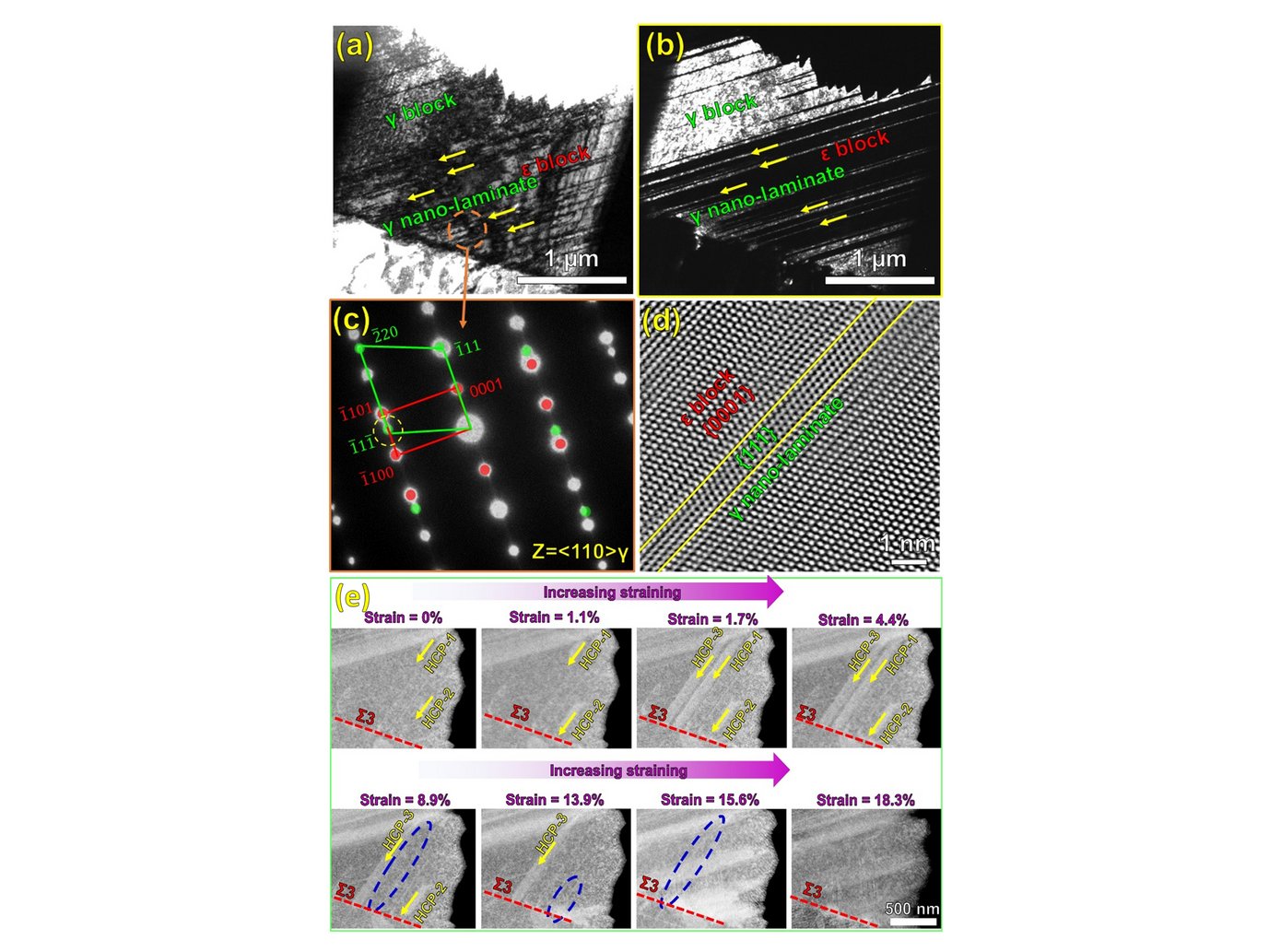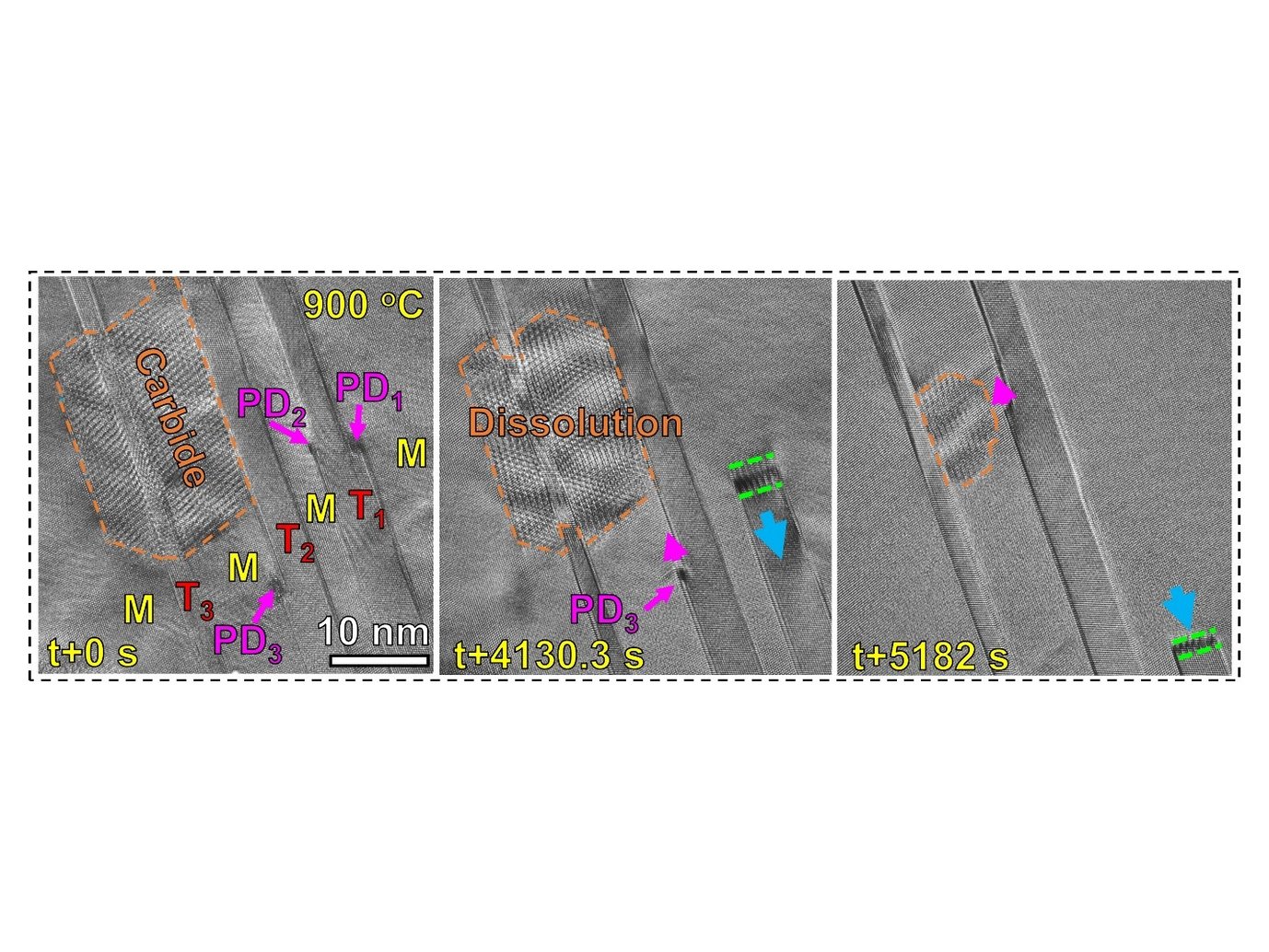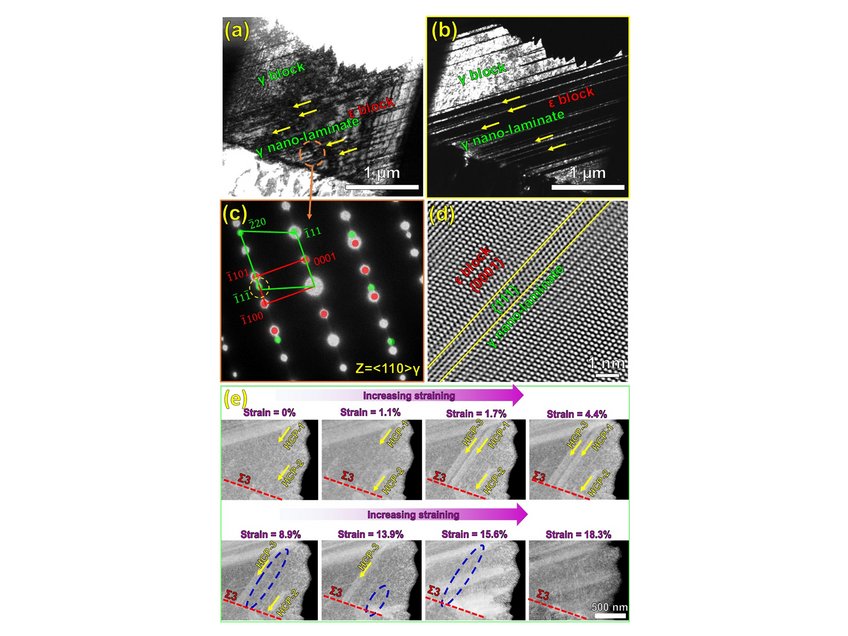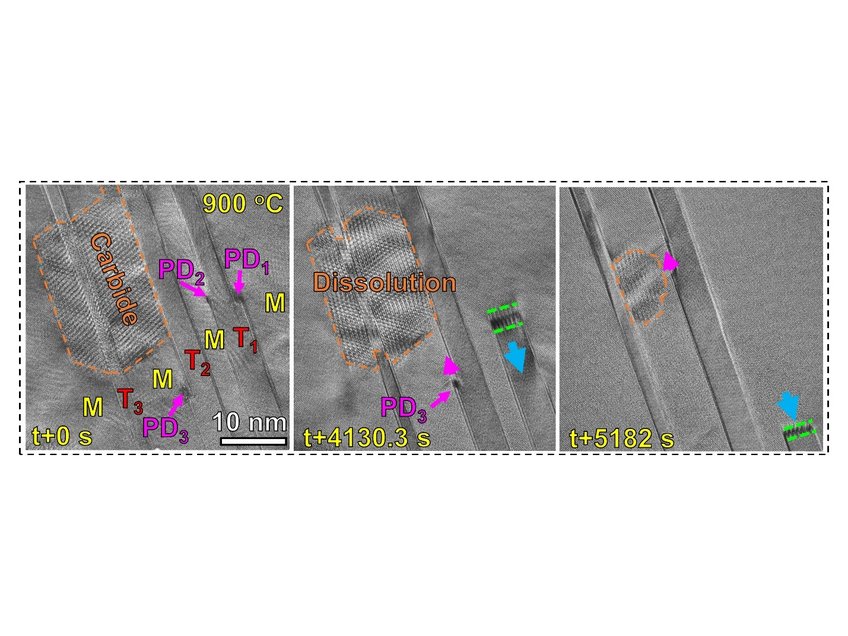
In situ S/TEM observation of phase transformations in high-entropy alloys
High entropy alloys (HEAs) are multi-principle element alloys containing at least four alloying elements at near-equal concentration. They have drawn great attention due to their remarkable mechanical properties. By adjusting composition and heat treatments the microstructure and phase transformations can be tuned to obtain alloys with high strength and ductility. We are utilizing atomic resolution and in situ S/TEM techniques to discover the underlying atomistic origins governing alloy properties to further advance the design of novel HEAs.
We used atomic resolution STEM and in situ straining to explore the bidirectional phase transformation from FCC to HCP and HCP to FCC in a dual-phase Fe50Mn30Co10Cr10 (at.%) HEA [1]. Our observations reveal that FCC grains contain a high density of HCP nanolaminates and very fine FCC nanolaminates are found in the HCP grains. Upon bulk mechanical testing, the microstructure further refines leading to an outstanding combination of strength and ductility. By in situ straining in the STEM we were able to directly observe the bidirectional phase transformation FCC→HCP→FCC within the FCC matrix (Figure 1), which is the key mechanism controlling the mechanical behavior in these alloys.
Recently, we successfully monitored the transformation of HCP to nanotwinned FCC and the subsequent formation of nanoscale precipitates at the nanotwin boundaries by in situ heating in an aberration-corrected STEM [2]. By heating until 400ºC, a high density of FCC coherent nanotwins evolves in the original HCP grain. At a temperature of 700ºC, the nucleation of plate-shaped nanocarbides at the nanotwin boundaries is observed, which are responsible for stabilizing the nanotwinned regions at elevated temperatures and thus provide excellent mechanical properties up to 700ºC. The discrete dynamics of nanocarbide dissolution and de-twinning processes were captured by in situ atomic resolution TEM at 900ºC (Figure 2), providing fundamental insights to conceive alloying strategies for stabilizing the alloy microstructure up to even higher temperatures.

Figure 1. (a) TEM/STEM analysis of the dual-phase Fe50Mn30Co10Cr10 (at.%) HEA after water-quenching. (a) The bright-field TEM and (b) the dark-field TEM images of two blocks (FCC γ and HCP ε ) containing nanoscale laminate features indicated by arrows. (c) Experimental selected area diffraction pattern (SADP) combined with the simulated diffraction patterns along the <110> γ zone axis. The simulated diffraction patterns for γ and ε are shown in green and red, respectively. (d) High-resolution HAADF-STEM image of a γ nanolaminate within the HCP ε block. (e) In situ straining of the dual-phase HEA showing bidirectional transformation.

Figure 2. In situ heating of a dual-phase HEA showing de-twinning and the dissolution of a nanocarbide phase at 900oC by aberration-corrected TEM.

